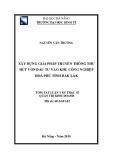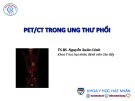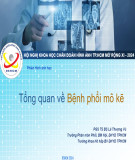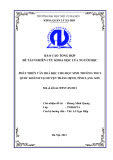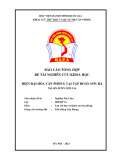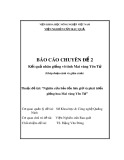
BioMed Central
Page 1 of 7
(page number not for citation purposes)
Cost Effectiveness and Resource
Allocation
Open Access
Research
Free does not mean affordable: maternity patient expenditures in a
public hospital in Bangladesh
Suhaila H Khan*
Address: Department of International Health and Development, Tulane School of Public Health and Tropical Medicine, 1440 Canal Street, Suite
2200, New Orleans, LA 70112, USA
Email: Suhaila H Khan* - skhan3@tulane.edu
* Corresponding author
Abstract
Objective: This study investigated a) the amount and types of out-of-pocket expenditures by
patients for nominally free services in a large public hospital in Bangladesh, b) the factors influencing
these expenses, and c) the impact of these expenses on household income.
Methods: Eighty-one maternity patients were interviewed during their hospitalization in the
Dhaka Medical College Hospital. Patients were selected by quota sample to match the distribution
of maternity patient categories in the hospital. Patients were interviewed with a semi-structured,
in-depth questionnaire.
Results: All interviewees incurred substantial out-of-pocket expenditures for travel, hospital
admission fees, medicine, tests, food, and tips. Only two of the expenditures, travel expenses and
admission fees, were not supposed to be provided free of charge by the hospital. The median total
per-patient expenditure was $65 (range $2–$350), equivalent to 7% (range 0.04%–225%) of annual
household income. Half of all patients reported that their families had to borrow to pay for care at
interest rates of 5%–30% per month. A third of these families reported selling jewelry, land or
household items to moneylenders. The rural patients reported more difficulty in paying for care
than the urban patients. Factors increasing the expenditures were duration of hospitalization, rural
residence, and necessary (e.g. C-section, hysterectomy) and unnecessary (e.g. episiotomy) medical
procedures.
Conclusion: Free maternity services in Bangladesh impose large out-of-pocket expenditures on
patients. Authorities could reduce the burden by reducing the duration of hospital stays, limiting
use of medical procedures, eliminating tips, and moving routine services closer to potential users.
Fee for service could reduce unofficial expenditures if the fee were lower than and replaced typical
unofficial expenditures, otherwise adding service fees without reform of current hospital practices
would lead to even more burdensome expenditures and inequities.
Background
In developing countries governments often subsidize serv-
ices at public health care facilities and provide them free
of charge to users. However, evidence suggests that users
still incur large expenditures using the 'free' services for
such things that are supposedly provided without charge.
Published: 19 January 2005
Cost Effectiveness and Resource Allocation 2005, 3:1 doi:10.1186/1478-7547-3-1
Received: 29 July 2004
Accepted: 19 January 2005
This article is available from: http://www.resource-allocation.com/content/3/1/1
© 2005 Khan; licensee BioMed Central Ltd.
This is an Open Access article distributed under the terms of the Creative Commons Attribution License (http://creativecommons.org/licenses/by/2.0),
which permits unrestricted use, distribution, and reproduction in any medium, provided the original work is properly cited.





